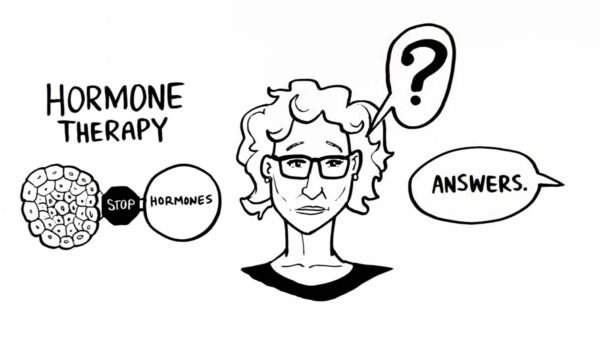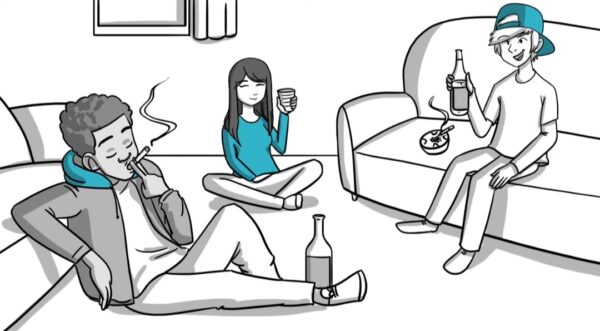What is Achondroplasia?
Achondroplasia is a genetic condition that lead to dwarfism. It results in shorter arms and legs, while the torso is usually normal-sized. People with achondroplasia often have a larger head, a prominent forehead and a flattened nose. This condition is caused by a gene mutation that affects bone growth. It is usually inherited but may also occur randomly.


Statistics and Numbers About Achondroplasia
Prevalence
- Achondroplasia seen in approximately 1 in 15,000 to 40,000 births worldwide.
- It is the most common form of dwarfism.
Genetics
- About 80% of cases are caused by a new mutation (spontaneous mutation), meaning the parents usually don’t carry the mutated gene.
- The remaining 20% of cases are inherited from one parent who has the condition.
Life Expectancy
- Life expectancy of people with achondroplasia is close to average, though it may be slightly shorter because of complications such as spinal issues, breathing difficulties and obesity.
- With medical advancements, many people with achondroplasia live into adulthood and lead normal, fulfilling lives.
Physical Characteristics
- Average height for an adult with achondroplasia is typically around 4 feet (1.32 meters) tall.
- Average head circumference tends to be larger than average, cause to the characteristic prominent forehead.
Associated Health Issues
- Spinal stenosis (narrowing of the spinal canal) affects up to 25-50% of people with achondroplasia and can lead pain or neurological issues.
- About 50% of people experience ear infections or hearing problems due to the shape of the ear and Eustachian tube.
- Obesity is more common in people with achondroplasia, with up to 50% experiencing it as they grow older.
What Are The Causes Of Achondroplasia?
Achondroplasia is caused by a mutation in the FGFR3 gene (fibroblast growth factor receptor 3). This gene helps control bone growth, especially in the arms and legs. When the gene is mutated, it lead to the protein it produces to become overactive, which interferes with the normal development of bone tissue and leads to short stature.
Mutation is usually inherited in an autosomal dominant manner, meaning that only one copy of the mutated gene (from either parent) is enough to lead to the condition. In many cases, mutation happens spontaneously in a person with no family history of the disorder.
This mutation affects the growth of bones in the body, cause to the characteristic features of achondroplasia, like as short limbs and a normal-sized torso.



What Are The Symptoms Of Achondroplasia?
Short Stature
- People with achondroplasia are often much shorter than average. Average adult height is around 4 feet (1.32 meters).
Disproportionate Limb Length
- Their arms and legs are shorter compared to the torso, cause to a distinctive appearance with a normal-sized trunk and short limbs.
Large Head
- People with achondroplasia usually have a larger-than-normal head with a prominent forehead and a relatively flat nose bridge.
Bowed Legs
- Many people have bowed legs or knock-knees, which can result in joint issues over time.
Spinal Curvature
- Conditions like lordosis (curved lower back) or kyphosis (curved upper back) are common and can cause discomfort or mobility problems.
Joint Problems
- People with achondroplasia may experience joint stiffness or pain, especially in the knees, hips and elbows, which can cause to issues with mobility.
Breathing Difficulties
- Some people may have respiratory problems, particularly if there are issues with the airway, which can lead to snoring or difficulty breathing, especially while sleeping.
Frequent Ear Infections
- Because of shorter Eustachian tube, people with achondroplasia are more prone to ear infections and hearing problems.
Delayed Motor Skills
- Some children with achondroplasia may experience delays in learning to walk or move, though most will eventually achieve normal developmental milestones.
Achondroplasia Gene And Mutation
Achondroplasia is caused by mutations in the FGFR3 gene, which stands for fibroblast growth factor receptor 3. This gene plays a key role in both bone growth and development especially, regulating the growth of cartilage, which later turns into bone.
Mutation
- Specific mutations responsible for achondroplasia occur in the FGFR3 gene, located on chromosome 4.
- These mutations cause to an overactive FGFR3 protein, which inhibits the normal growth and lengthening of bones in the arms and legs.
- More than 99% of cases of achondroplasia are caused by one of two point mutations:
- G1138A mutation: A change from guanine (G) to adenine (A) at position 1138 of the FGFR3 gene.
- G1138C mutation: A change from guanine (G) to cytosine (C) at the same position.
Inheritance
- Autosomal Dominant: Achondroplasia is inherited in an autosomal dominant pattern, meaning that only one copy of the mutated FGFR3 gene is needed to cause the condition.
- If one parent has achondroplasia, there is a 50% chance of passing it to their child.
- If both parents have achondroplasia, there is a 25% chance of having a child without achondroplasia, 50% chance the child will have achondroplasia and a 25% chance and child will inherit two copies of the mutation, which is typically fatal in infancy.
Spontaneous Mutations
- In about 80% of cases, achondroplasia arises due to a spontaneous mutation in the FGFR3 gene, meaning it occurs randomly and is not inherited from the parents.
- These mutations are more likely to occur in children born to older fathers, with paternal age being a known risk factor.
Impact of the Mutation
- The FGFR3 mutation causes the receptor to remain overly active, which negatively affects the normal growth and elongation of long bones.
- This cause to the characteristic features of achondroplasia, including short limbs, a normal-sized torso and other skeletal abnormalities.



What Are The Treatment Options Of Achondroplasia?
1. Medical Therapies
- Vosoritide: A new FDA-approved drug for children with achondroplasia. It works by targeting pathways that counteract the overactive FGFR3 protein, promoting bone growth.
- Growth Hormone Therapy: Occasionally used to increase height in children, though its effectiveness in achondroplasia is limited.
2. Surgical Interventions
- Limb-Lengthening Surgery:
- Specialized procedure to lengthen the arms and legs. It involves breaking the bones and gradually stretching them as they heal.
- This option requires significant time, resources and physical therapy and carries risks, such as infections or complications.
- Spinal Surgery:
- Performed to correct spinal stenosis (narrowing of the spinal canal) or kyphosis (severe curvature of the spine), which can cause pain or neurological problems.
3. Supportive Treatments
- Physical Therapy:
- Helps improve mobility, balance and muscle strength.
- Can address joint pain or stiffness.
- Occupational Therapy:
- Supports people in adapting to daily activities and using assistive devices.
- Hearing Aids:
- Used to manage hearing loss caused by frequent ear infections or fluid buildup in the middle ear.
4. Management of Complications
- Respiratory Support:
- For sleep apnea or breathing issues, treatments may include continuous positive airway pressure (CPAP) machines or in severe cases, surgical intervention.
- Weight Management:
- Maintaining a healthy weight is critical to avoid additional stress on joints and the spine.
- Treatment for Ear Infections:
- Regular monitoring and treatment with antibiotics or surgery (e.g., ear tubes) to prevent hearing loss.
5. Counseling and Support
- Genetic Counseling:
- Helps families understand the genetic aspects of achondroplasia, especially if planning for children.
- Psychological Support:
- Counseling can help people and families cope with the emotional and social challenges associated with the condition.
6. Lifestyle Adaptations
- Adaptive Equipment:
- Specialized tools and home modifications, such as step stools, modified furniture or grab bars, could enhance independence and accessibility.
- Educational Support:
- Ensuring that children with achondroplasia receive accommodations at school to meet their physical needs.
Advices For Living With Achondroplasia
1. Fallow Medical Instructions
- Regular Check-Ups: Work closely with doctors for manage any complications, like as spinal issues, joint pain or breathing problems.
- Specialized Care: Seek out specialists in genetics, orthopedics and physical therapy to treatment specific needs.
2. Focus on Physical Well-being
- Stay Active: Engage in low-impact exercises like swimming, walking or yoga to maintain strength, flexibility and health.
- Healthy Weight Management: Keep a balanced diet to avoid excessive weight, which can strain the joints and spine.
- Physical Therapy: Use therapy to improve posture, mobility and balance, especially during growth stages.
3. Adapt Your Environment
- Modify Your Home: Use step stools, grab bars and custom furniture to improve accessibility and comfort.
- Use Assistive Devices: Adaptive tools like reachers, specialized keyboards or driving modifications can enhance independence.
- Accessible Workspaces: Advocate for adjustments at school or work to ensure you have ergonomic and comfortable setups.
4. Stay Strong Emotionally
- Seek Support: Join support groups or connect with organizations like the Little People of America (LPA) for advice and community.
- Embrace Individuality: Celebrate your unique qualities and find activities or hobbies that showcase your strengths.
- Counseling: Talk with a counselor or therapist to build self-esteem and navigate emotional challenges.
5. Plan for Social and Educational
- Educate Others: Be open about your condition to help others understand your needs and break stereotypes.
- Advocate for Yourself: Speak up for accommodations at school, work or public places to ensure equal opportunities.
- Teach Confidence: For children with achondroplasia, foster self-confidence and encourage them to participate in diverse activities.
6. Monitor Growth and Development
- Early Intervention: Address developmental delays with therapy or educational resources to help achieve milestones.
- Prepare for Puberty: Be aware that growth differences become more pronounced during adolescence and may require emotional preparation.
7. Develop a Strong Support Network
- Family and Friends: Surround yourself with people who uplift and encourage you.
- Online Communities: Participate in online forums or social media groups to share experiences and gain insights.
8. Plan for the Future
- Genetic Counseling: If planning a family, genetic counseling can help evaluate risks and provide guidance.
- Career Choices: Explore careers that suit your abilities and interests, focusing on environments that value inclusion.
You can find about another article about dwarfism in below. We wish healthy life to you.

